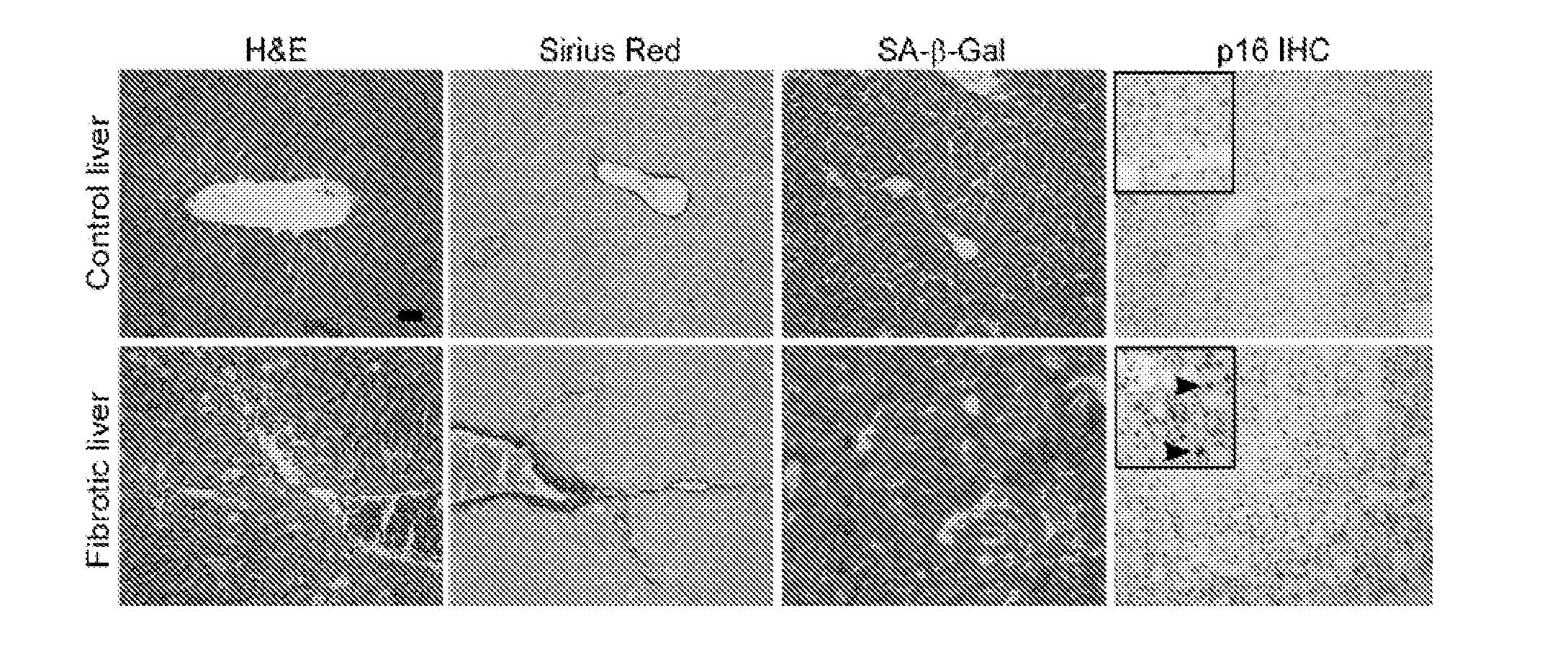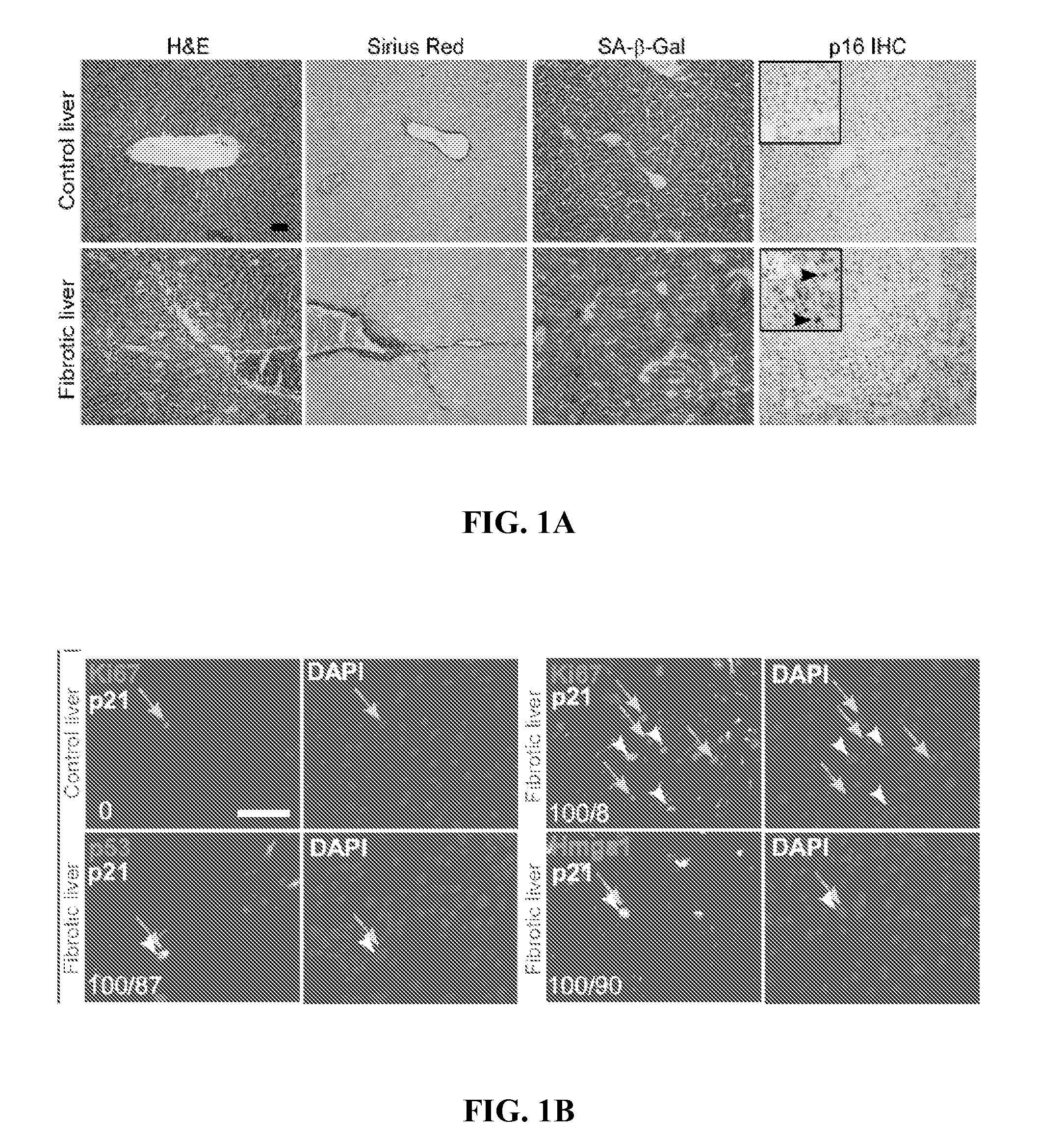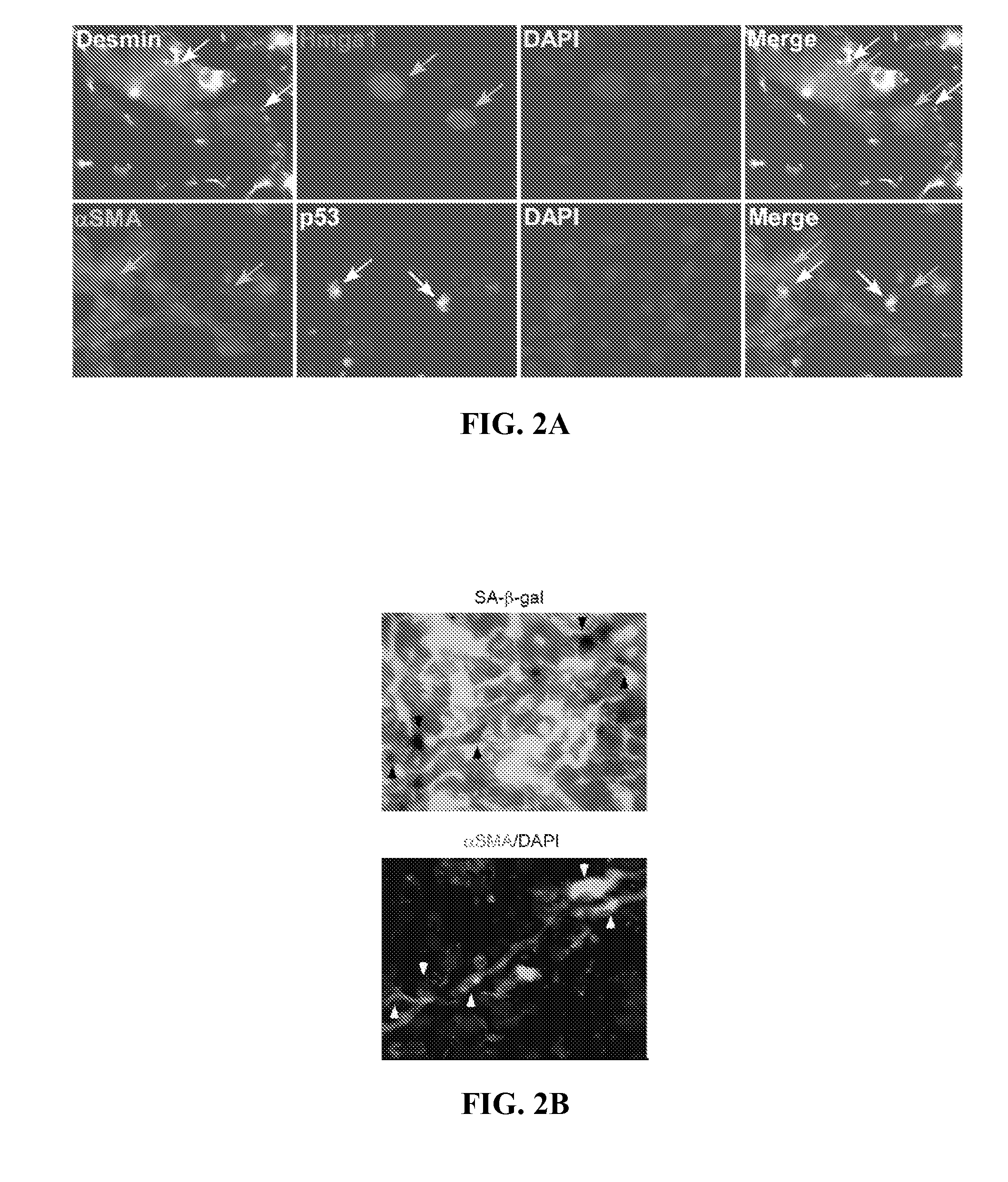Methods for treating fibrosis by modulating cellular senescence
a fibrosis and cellular senescence technology, applied in the direction of dna/rna fragmentation, drug compositions, peptides, etc., can solve the problem of limiting the fibrogenic response to acute tissue damage, excessive liver fibrosis, and non-cancer pathology functional contribution has not been examined, etc., to achieve enhanced secretion of extracellular matrix degrading enzymes, reduced liver fibrosis, and enhanced liver fibrosis
- Summary
- Abstract
- Description
- Claims
- Application Information
AI Technical Summary
Benefits of technology
Problems solved by technology
Method used
Image
Examples
example 1
Experimental Procedures
[0094]The following experimental procedures were used in the Examples.
[0095]Animals. Genotyping protocols of p53− / −, INK4a / Arf− / − and TRE-shp53 mice were previously described and are incorporated by reference (Dickins et al., 2007, Nat. Genet., 39, 914-921; Schmitt et al., 2002, Cell, 109, 335-346). GFAP-tTA mice were obtained from the Jackson Laboratory. Wild type, p53− / −, INK4a / Arf− / − and p53− / −;INK4a / Arf− / − mice were treated twice a week with 12 consecutive i.p. (intraperitoneal) injections of 1 ml / kg CCl4 to induce liver fibrosis. GFAP-tTA;TRE-shp53 mice were treated similarly for 2 weeks. Animals were sacrificed 48-72 hours after the last injection and their livers used for further analysis. To modify NK cell function, mice were treated three times weekly either i.v. with an anti-Asialo-GM1 antibody (25 μl in 200 μl saline, Wako, Va., USA) for 10 or 20 days or i.p. with polyI:C (Sigma, USA) 1 mg / kg.
[0096]Histological analysis. Paraffin embedded tissue sec...
example 2
Senescent Activated Stellate Cells Accumulate in the Cirrhotic Liver
[0107]The following teachings can be adapted to determine whether senescent cells accumulate in other fibrotic tissues besides liver. For example, after treatment to a model organism to cause damage / fibrosis in a target tissue, the tissue can be analyzed for senescent cell accumulation as described below. Fibrotic tissues that are identified to accumulate senescence cells can be treated by the methods described supra.
[0108]To investigate the relationship between fibrosis and cellular senescence, 7-9 week old female mice were subjected to a six week treatment with CCl4, a chemical widely used to induce fibrosis in experimental animals (Bataller and Brenner, 2005, J. Clin. Invest. 115, 209-218, the contents of which are hereby incorporated by reference). This protocol produced fibrosis as assessed by staining with Hematoxylin-Eosin and Sirius Red, which directly marks the extracellular matrix deposited by activated HS...
example 3
Fibrosis Progression is Restricted by an Intact Senescence Machinery
[0111]Hepatic stellate cells initially proliferate in response to liver damage, and so it was not obvious how their senescence would ultimately influence the progression of fibrosis. Since p53 contributes to cellular senescence in most murine tissues (Collado et al., 2007), cells derived from mice lacking p53 often show an enhanced proliferative capacity in culture (Sherr, 1998, Genes Dev., 12, 2984-2991). To evaluate the biological impact of senescence on liver fibrosis, the histopathology of livers obtained from wild-type and p53− / − mice treated with CCl4 was initially compared. After six weeks, livers were examined for fibrosis using Sirius Red staining and expression of Tgfb1, a major cytokine upregulated during fibrosis progression (Bataller and Brenner, 2005).
[0112]Surprisingly, livers derived from p53− / − mice contained significantly more fibrotic tissue relative to wild type controls (FIGS. 3A,B, and data not...
PUM
| Property | Measurement | Unit |
|---|---|---|
| Immunostimulation | aaaaa | aaaaa |
Abstract
Description
Claims
Application Information
 Login to View More
Login to View More - R&D
- Intellectual Property
- Life Sciences
- Materials
- Tech Scout
- Unparalleled Data Quality
- Higher Quality Content
- 60% Fewer Hallucinations
Browse by: Latest US Patents, China's latest patents, Technical Efficacy Thesaurus, Application Domain, Technology Topic, Popular Technical Reports.
© 2025 PatSnap. All rights reserved.Legal|Privacy policy|Modern Slavery Act Transparency Statement|Sitemap|About US| Contact US: help@patsnap.com



